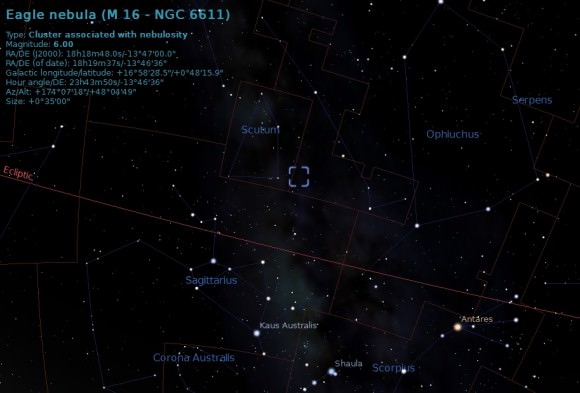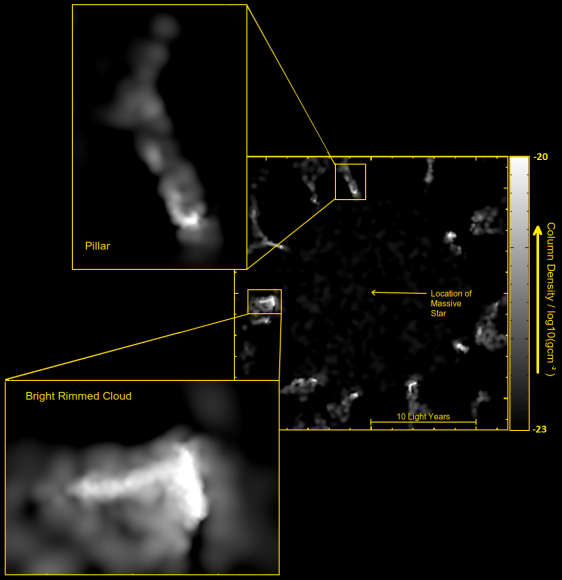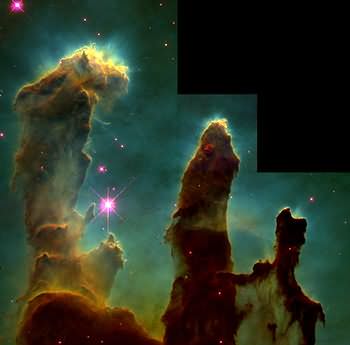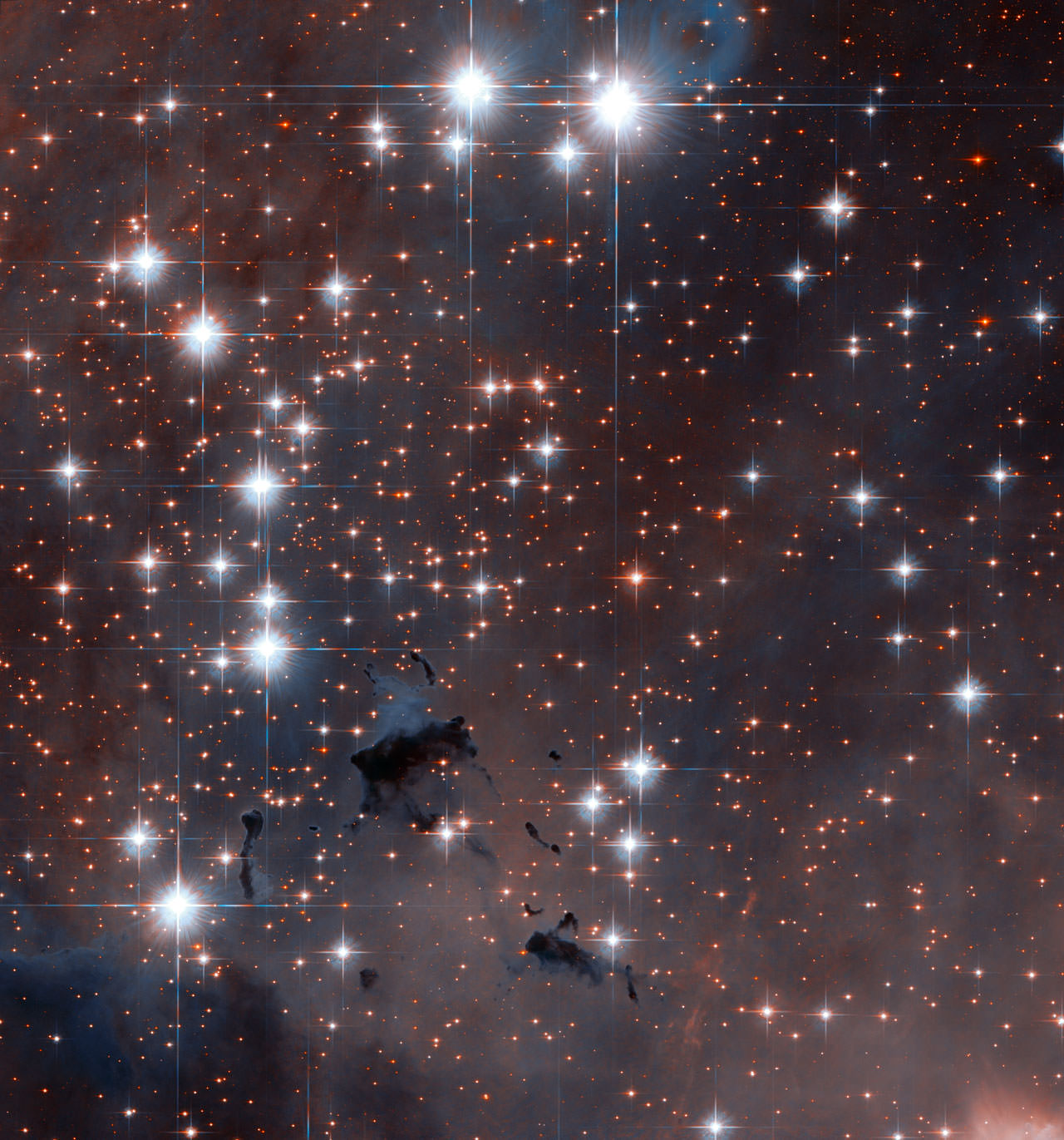It’s one of the most iconic images of the modern Space Age. In 1995, the Hubble Space Telescope team released an image of towering columns of gas and dust that contained newborn stars in the midst of formation. Dubbed the “Pillars of Creation,” these light-years long tendrils captivated the public imagination and now grace everything from screensavers to coffee mugs. This is a cosmic portrait of our possible past, and the essence of the universe giving birth to new stars and worlds in action.
Now, a study out on Thursday from the 2014 National Astronomy Meeting of the Royal Astronomical Society has shed new light on just how these pillars may have formed. The announcement comes out of Cardiff University, where astronomer Scott Balfour has run computer simulations that closely model the evolution and the outcome of what’s been observed by the Hubble Space Telescope.
The ‘Pillars’ lie in the Eagle Nebula, also known as Messier 16 (M16), which is situated in the constellation Serpens about 7,000 light years distant. The pillars themselves have formed as intense radiation from young massive stars just beginning to shine erode and sculpt the immense columns.

But as is often the case in early stellar evolution, having massive siblings nearby is bad news for fledgling stars. Such large stars are of the O-type variety, and are more than 16 times as massive as our own Sun. Alnitak in Orion’s belt and the stars of the Trapezium in the Orion Nebula are examples of large O-type stars that can be found in the night sky. But such stars have a “burn fast and die young” credo when it comes to their take on nuclear fusion, spending mere millions of years along the Main Sequence of the Hertzsprung Russell diagram before promptly going supernova. Contrast this with a main sequence life expectancy of 10 billion years for our Sun, and life spans measured in the trillions of years — longer than the current age of the universe — for tiny red dwarf stars. The larger a star you are, the shorter your life span.

Such O-Type stars also have surface temperatures at a scorching 30,000 degrees Celsius, contrasted with a relatively ‘chilly’ 5,500 degree Celsius surface temperature for our Sun.
This also results in a prodigious output in energetic ultraviolet radiation by O-type stars, along with a blustery solar wind. This carves out massive bubbles in a typical stellar nursery, and while it may be bad news for planets and stars attempting to form nearby any such tempestuous stars, this wind can also compress and energize colder regions of gas and dust farther out and serve to trigger another round of star formation. Ironically, such stars are thus “cradle robbers” when it comes to potential stellar and planetary formation AND promoters of new star birth.
In his study, Scott looked at the way gas and dust would form in a typical proto-solar nebula over the span of 1.6 million years. Running the simulation over the span of several weeks, the model started with a massive O-type star that formed out of an initial collapsing smooth cloud of gas.
That’s not bad, a simulation where 1 week equals a few hundred million years…
As expected, said massive star did indeed carve out a spherical bubble given the initial conditions. But Scott also found something special: the interactions of the stellar winds with the local gas was much more complex than anticipated, with three basic results: either the bubble continued to expand unimpeded, the front would expand, contract slightly and then become a stationary barrier, or finally, it would expand and then eventually collapse back in on itself back to the source.
The study was notable because it’s only in the second circumstance that the situation is favorable for a new round of star formation that is seen in the Pillars of Creation.
“If I’m right, it means that O-type and other massive stars play a much more complex role than we previously thought in nursing a new generation of stellar siblings to life,” Scott said in a recent press release. “The model neatly produces exactly the same kind of structures seen by astronomers in the classic 1995 image, vindicating the idea that giant O-type stars have a major effect in sculpting their surroundings.”
Such visions as the Pillars of Creation give us a snapshot of a specific stage in stellar evolution and give us a chance to study what we may have looked like, just over four billion years ago. And as simulations such as those announced in this week’s study become more refined, we’ll be able to use them as a predictor and offer a prognosis for a prospective stellar nebula and gain further insight into the secret early lives of stars.


